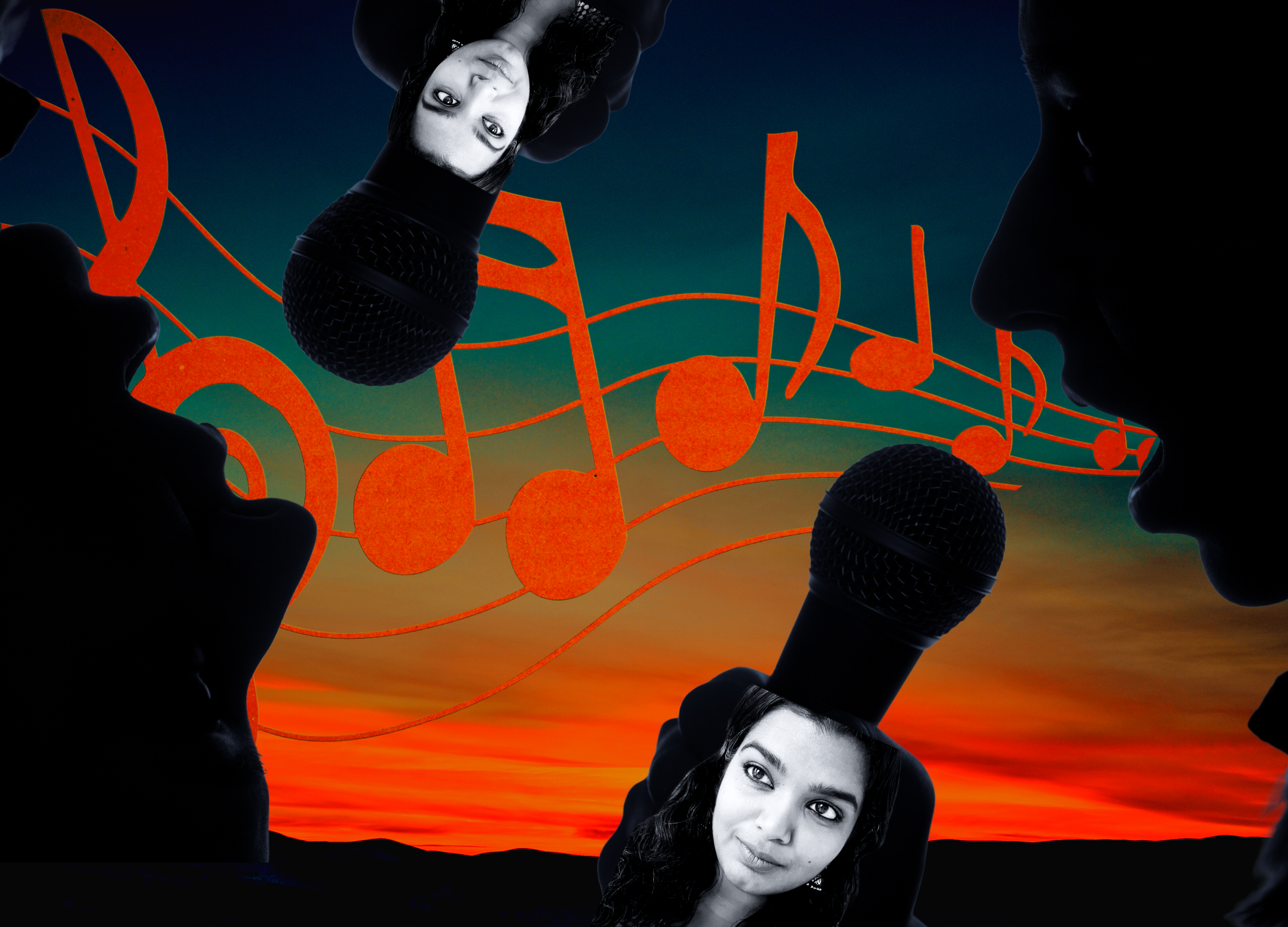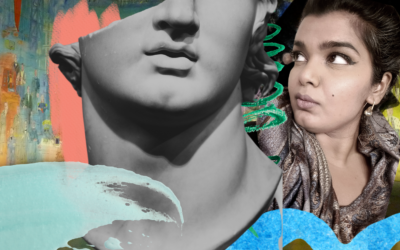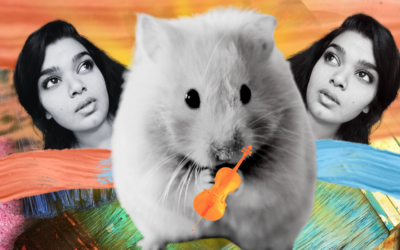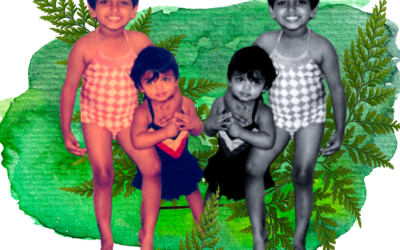As a child singing was fun. Singing with my sisters, at church, or on a bus ride. But as I grew up, I felt a separation from those institutions which were the central point for communal singing. A few years ago, that all changed. Here is the story of that moment.
*
Kirtans: A Deep Remembering
I’m sitting crossed-legged, clapping ecstatically. Words of worship are melodically tripping out of my mouth as if I’ve always been a believer. Eyes closed, body swaying, lips curled in an unintentional smile. The pace picks up and the lead singer emphatically flicks his wrist upwards.
“Om Parvati Pataye Hara Hara Mahadeva!”
Everyone joins in. Here we go, I’m ready. I’m at my second kirtan this week. Kirtan is a spiritual musical concert from the Bhakti yogic tradition. Singing, chanting, and clapping are acts of worship and meditation. The message is the same – praising divinity; divinity within each of us and without.
The night starts quiet, slow, peaceful, and with intention. The traditional Indian classical singing is smooth, celestial, and international – the lead Sikh singer is backed up by singers from Indonesia, Germany, and Australia. The singers take intermittent breaks for the solo performances from the flutist, guitarist, and tabla player. The music is incredible.
As the evening progresses, the music picks up. Fast, faster, even faster, and then…ecstasy. Towards the end of the night, half the room was on their feet, dancing. Women had let their hair down loose and men were thumping the floor with their arms around each other.
‘Shall we call it a night?’ asks Punnu – the leader of this kirtan.
He laughs out loud at the pleas of protest from the audience and nods at his band.
‘Challo, one last one!’
I’m glad. So, we continue singing, chanting, dancing and clapping – knowing this is the last one. Before we go out, we spend a moment in meditation. Punnu asks us to continue to feel this sense of peace, devotion and happiness as we leave the kirtan. He asks that we may bring this goodness within us for all those around us to feel.
We bow.
On my way home, I felt at peace. I checked into my body by raising my shoulders and rolling my head on my neck. I feel no tension – like I’ve walked out of a massage. It makes sense – they say your heavy energy leaves your body when you applaud and celebrate.
*
Don’t cry for Me Argentina
When I was younger, my sisters and I would spend hours upon hours singing from a big book filled with handwriting. You see, this was in the days before the internet. To get the lyrics of a song, Clea, my eldest sister, had to painstakingly play and replay music on her cassette Walkman. She would use colored pens to elegantly write the words to our favorite songs into a huge blue accountant’s ledger on which she had stuck a cardboard yellow smiley face.
From this book, we sang pop songs, hymns and the national anthem of the UAE. An entire evening could have gone by and we were still thumbing through that plastic-covered lyrical repository.
‘Don’t Cry For Me Argentina?’ ‘Oh, yes!’
As I got older – I often thought of the evenings of singing as a ‘waste of time’. I was in my 20s and at the height of my capitalistic hyper-productivity buy-in. In my 20s – the only time you’d see me singing and dancing would be at the end of a long work week with far too much rum in my system. In that world of ‘GO! Go! Go! The only way in which I could access my inner dancer and singer – was through intoxication.
How sad.
I realize now that as children singing out of The Big Blue Book we were in touch with a sense of joyful freedom. We were intuitively having our own kirtan, song circle, and meditation. Our bodies, minds, and spirits innately craved that meditative jubilant trance only a night of song and dance can bring. No one taught us how – but we did what humans for millennia have done. Come together and sing.
*
Stayin’ Alive. Feelin’ ALIVE.
Singing and dancing are one of the most uplifting and incredible ways of being alive.
It is a portal that is ALWAYS open to us. Not just when we are at Church or at a kirtan. Not just when we are drunk on six Vodka Cranberries. Not only when we have performed for some audience, released an album or gone to some dance class.
One of the many violences of our current world order – is the separation of the NATURAL art of singing and dancing. When we see this jubilance as something that is separate from us – we isolate ourselves from that inner innate joy.
*
My love of kirtans slowly abated.
The cultural appropriation of Bhakti yoga began to feel disingenuous and grating to my nerves. As I attended kirtans in Bali, I often found myself to be the only person of color in a room filled with white hippies being led by someone named Guru Greg. Kirtans often work as a call and response. The sharp pain induced by having to repeat Sanskrit words of worship mangled by an Anglo accent…felt too much. Even for me. I was reminded of the Monty Python skit when a Brit is teaching a room full of Italians how to speak Italian. Something didn’t sit right.
When I’d come home to find these bhajans on YouTube the first ten options would inevitably be sung by a raspy-voiced Anglo accent. The same kind of accent I heard echoed within cafes and ecstatic dance floors throughout Bali. Why are these voices dominating my YouTube search? Maybe this cultural fusion is more appealing than traditional chants? Maybe it is white supremacy? Maybe it’s Maybelline.
Soon, going to these kirtans, watching YouTube videos or listening to albums of these so-called fusion spiritual artists began to irk me. Why are people who are so untethered to their own religions, finding peace and profit by co-opting songs of worship from an ancient culture which isn’t their own? The spiritual void is being filled by capitalism and marketing. I was seeing the supermarket of spirituality being bandied about without any of the accountability or the honoring of the original intention.
*
Twerking at a Kirtan? Erm. Nope.
The last time I ever did go to a kirtan was with a friend in Bali. The kirtan started with a cacao ceremony and meditation. Hey, why not throw in some more cultural appropriation? I sat at the back of the room.
In front of me, I saw skinny white women with backless dresses pile in along with their skinny white long-haired male companions. One of them was mouthing over the singing: “Can we swap places? I want to cuddle with him”. It didn’t happen. Her friend didn’t want to swap seats with her. What did happen though, was she started twerking in her spot in praise to Lord Ganesha.
That was my breaking point.
I looked at my friend.
She leaned over and whispered in my ear: “Ready to leave whenever you are…”
*
How do you deal with the nuances?
Singing together is an incredible experience. And so often, it is tied into a larger spiritual belief system. Singing in the church was one of my favorite things to do. Spirituality and singing are such a perfect fit. The teachings, practices, music and songs of our religions are deeply unifying and can even be liberating. But, the older I got, the more I began to feel a sense of disease within the church as I became aware of how problematic and patriarchal the institution was. So much of organized religion and even the so-called ‘spiritual’ community leverage systems of oppression.
Music feels powerful. I listen to it, sing along and enjoy it as much as I can..and still, I wonder.
How do you enjoy singing in those places which don’t fully honor you as a person? Which snidely look at those of different sexual orientations? How do you sing along with a value system that is bitterly patriarchal and borderline misogynistic? How do you enjoy singing along to the music which esteems power over and diminishes others? And what about singing pop and secular songs? Well…what value system does secular music adhere to?
So, yes. It is complicated. How do we harness and enjoy the beauty of music? How do we enjoy the joy of community? AND how do we apply critical thinking of the texts we are praising and worshiping? How do we hold nuance and awareness around how we hold community? How do we engage in community? How do we reclaim the joy of singing and dancing WITHOUT buying into systems that have co-opted it?
We can go past the co-option.
We can reconnect to the art.
We can reconnect to love.




